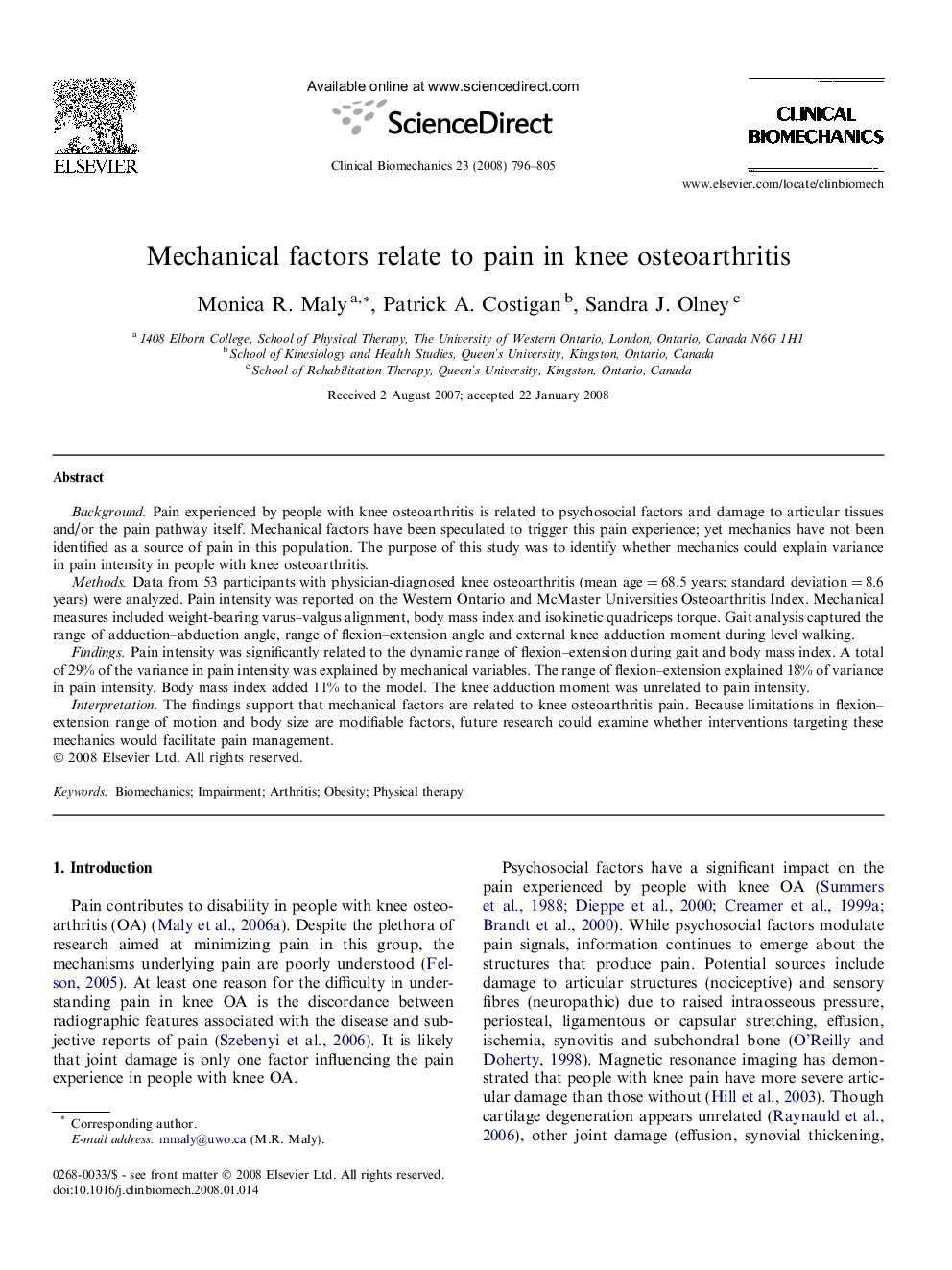| Article ID | Journal | Published Year | Pages | File Type |
|---|---|---|---|---|
| 4051086 | Clinical Biomechanics | 2008 | 10 Pages |
BackgroundPain experienced by people with knee osteoarthritis is related to psychosocial factors and damage to articular tissues and/or the pain pathway itself. Mechanical factors have been speculated to trigger this pain experience; yet mechanics have not been identified as a source of pain in this population. The purpose of this study was to identify whether mechanics could explain variance in pain intensity in people with knee osteoarthritis.MethodsData from 53 participants with physician-diagnosed knee osteoarthritis (mean age = 68.5 years; standard deviation = 8.6 years) were analyzed. Pain intensity was reported on the Western Ontario and McMaster Universities Osteoarthritis Index. Mechanical measures included weight-bearing varus–valgus alignment, body mass index and isokinetic quadriceps torque. Gait analysis captured the range of adduction–abduction angle, range of flexion–extension angle and external knee adduction moment during level walking.FindingsPain intensity was significantly related to the dynamic range of flexion–extension during gait and body mass index. A total of 29% of the variance in pain intensity was explained by mechanical variables. The range of flexion–extension explained 18% of variance in pain intensity. Body mass index added 11% to the model. The knee adduction moment was unrelated to pain intensity.InterpretationThe findings support that mechanical factors are related to knee osteoarthritis pain. Because limitations in flexion–extension range of motion and body size are modifiable factors, future research could examine whether interventions targeting these mechanics would facilitate pain management.
